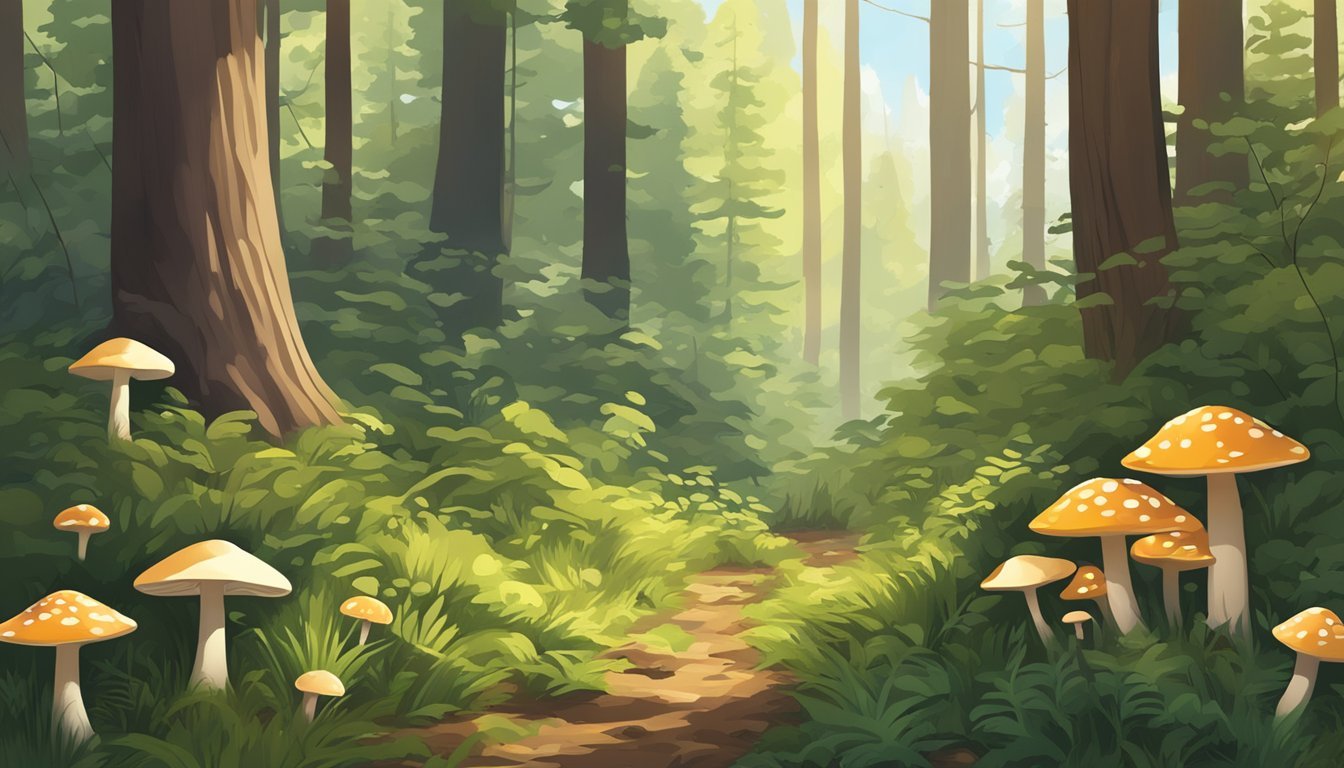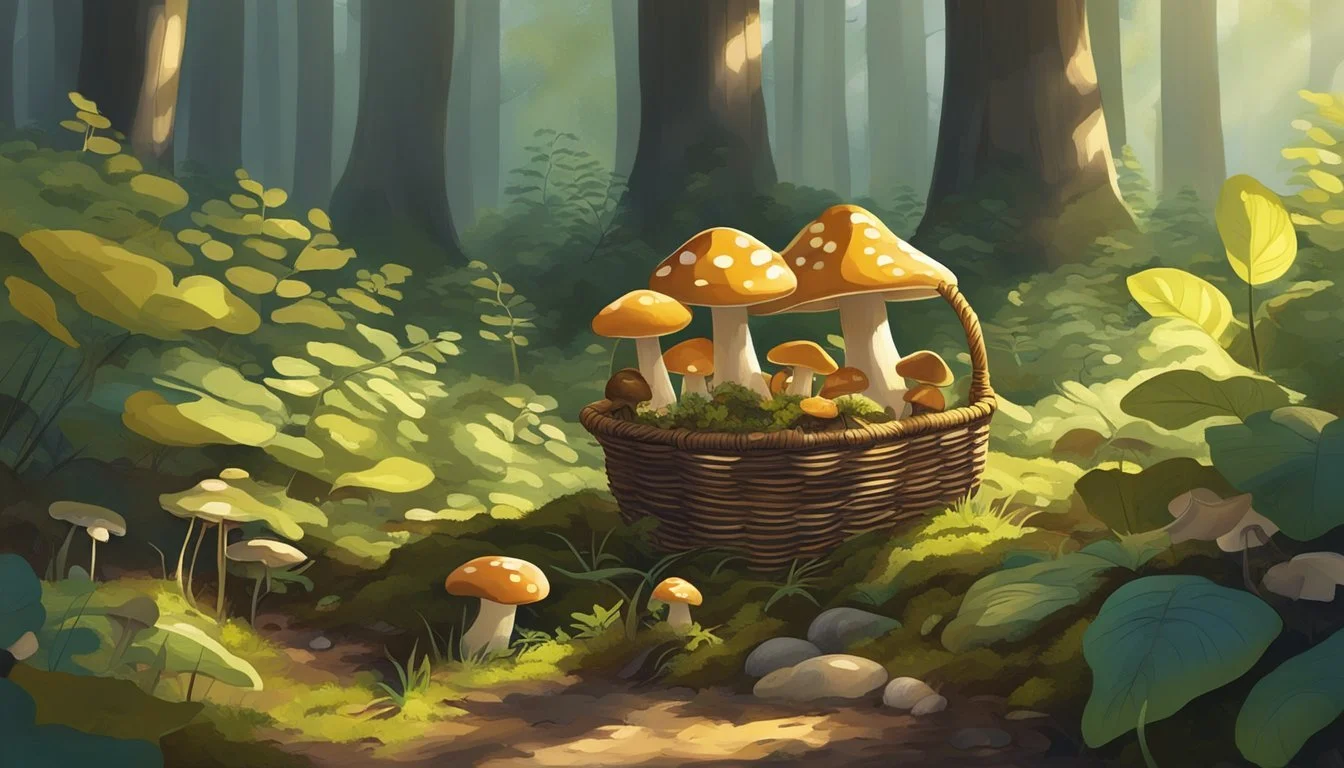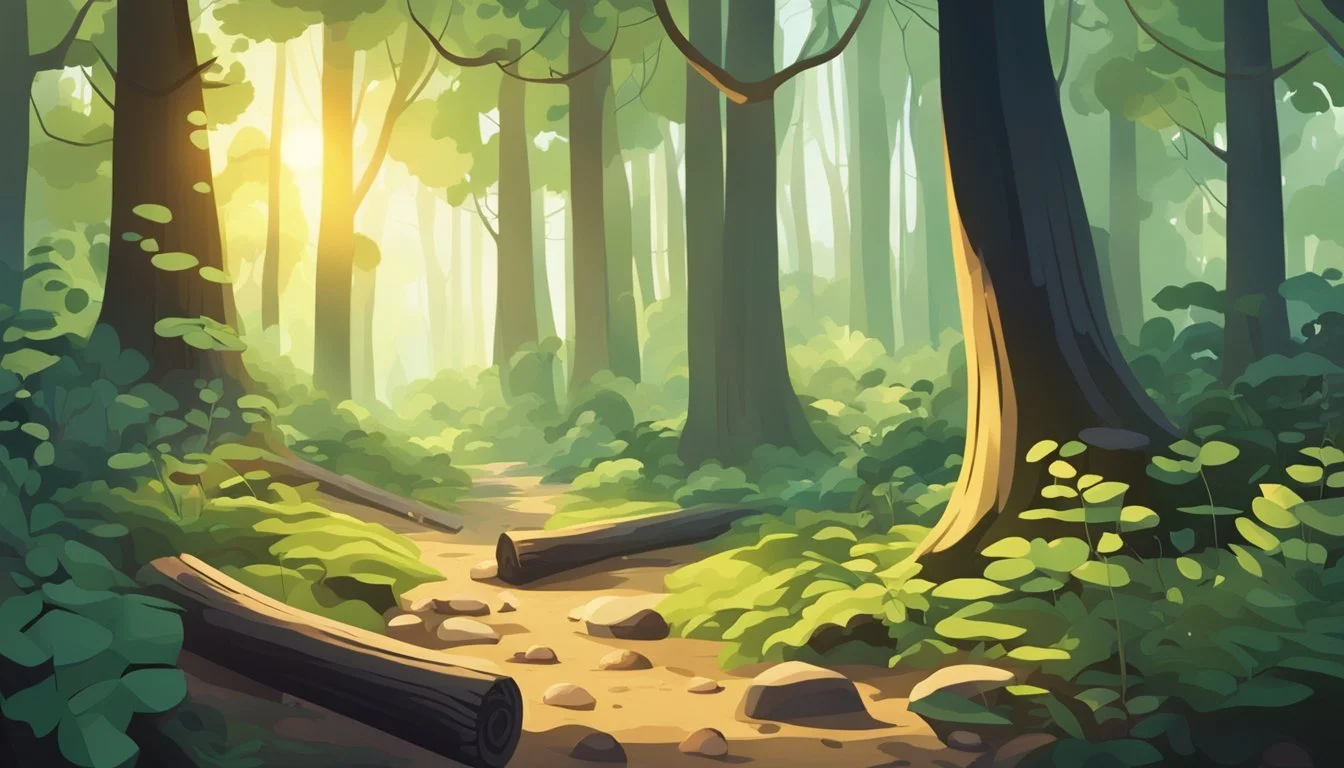Mushroom Hunting Colorado
Essential Tips for a Safe Foray
This Article is Part of Our Guide on Mushroom Hunting for All 50 States
Mushroom hunting in Colorado is a rewarding activity that offers a unique combination of outdoor adventure and the promise of delicious culinary rewards. The state, known for its diverse landscapes and climates, provides fertile grounds for a variety of edible mushrooms. These mushrooms typically have a growing season that spans from mid-July to the end of September, which coincides with the summer and early fall months. The most sought-after varieties in Colorado include porcinis and chanterelles, famed for their flavors and usability in an array of dishes.
The activity doesn't just present an opportunity to forage for food; it also encourages enthusiasts to engage with the natural environment. Colorado's mixed conifer forests, especially those situated at elevations between 9,000 and 11,000 feet, are prime habitats for mushroom growth. These forests offer a haven for a range of species, including the easily identifiable puffballs and the prized milky caps. For many, the art of mushroom hunting also provides an educational experience, as they learn to distinguish between edible varieties and those that are best admired from afar.
Venturing into the world of mycology in Colorado's public lands, foragers can enjoy the benefits of abundant spaces managed by entities like the Bureau of Land Management and the United States Forest Service, where mushroom hunting often requires no permits for personal picking. The San Juan Mountains are particularly well-known as a hotspot for mycophiles. Those who partake in this age-old tradition should always be mindful of the environment and practice sustainable foraging by taking only what they need and leaving the ecosystem undisturbed for future growth and for others to enjoy.
Foraging for More Than Just Mushrooms in Colorado
Colorado's rugged wilderness, from the Rocky Mountains to the Great Plains, offers a diverse array of wild edibles for the adventurous forager. While mushrooms are a sought-after find, the Centennial State's rich ecosystems provide a bounty of berries, nuts, greens, and roots. Discover the joys of foraging and immerse yourself in nature's abundance in Colorado's picturesque landscapes, from the alpine meadows of the San Juan Mountains to the pinyon-juniper woodlands of the Colorado Plateau.
👉 Foraging for Wild Edibles in Colorado
Commonly Found Edible Mushrooms in Colorado
Colorado is home to several edible mushroom species. Some of the most commonly found edible mushrooms in the state include:
Porcini (Boletus edulis): Commonly found in Colorado, this meaty mushroom has a rich, nutty flavor and is highly sought after by foragers and chefs.
Horse mushroom (Agaricus arvensis): With its large size and mild flavor, this edible mushroom is frequently found in Colorado's grassy areas and open woodlands.
Saffron milk cap (Lactarius deliciosus): This mushroom, found in Colorado, exudes a saffron-colored milk when cut and has a peppery, nutty flavor, making it a popular choice for cooking.
Morel (Morchella spp): These highly prized mushrooms are commonly found in Colorado and have a distinctive honeycomb appearance with a nutty, earthy flavor.
It is essential to properly identify any mushroom before consuming it, as some species can be poisonous. Beginners should go mushroom hunting with an experienced guide or join a local mycological society to learn how to identify edible mushrooms safely.
Benefits of Mushroom Hunting
Mushroom hunting in Colorado offers several benefits that cater to enthusiasts of outdoor activities, gastronomy, and educational hobbies.
Physical Exercise: Mushroom hunters enjoy the same physical benefits as hikers; they traverse various terrains, which promotes cardiovascular health and strengthens muscle groups. This hobby encourages individuals to spend time outdoors, engaging in moderate physical activity that can enhance overall well-being.
Connection with Nature: As mushroom hunting necessitates exploring local forests and mountains, individuals develop a deeper connection to the natural environment. This immersive experience allows them to appreciate the biodiversity and delicate ecosystems of their surroundings.
Culinary Experiences: For those who love to cook, mushroom hunting provides an opportunity to gather fresh, wild ingredients. The activity transforms a simple meal into an adventure, with the added reward of cooking with mushrooms that hunters have foraged themselves, like porcini and chanterelles.
Educational Benefit: Mushroom hunters often acquire extensive knowledge about local flora, learning to identify edible species while also recognizing those that are inedible or poisonous. They gain practical skills in sustainable foraging, ensuring they harvest mushrooms without harming the environment.
Mental Health: The quiet, meditative aspects of foraging can contribute to mental health improvements. Mushroom hunters often find tranquility and stress relief amidst the focus and patience required by this hobby.
In essence, mushroom hunting in Colorado is an enriching pastime that combines physical activity with educational pursuits, culinary joy, and mental well-being, making it a multifaceted and rewarding hobby.
Understanding the Ecosystem
The diverse ecosystems of Colorado, ranging from riparian areas to the mixed conifer forests, create a hospitable environment for a plethora of edible mushrooms. These fungi, thriving within the soil's rich organic matter, are integral to the health of the ecosystem. The mycelium, a complex underground network, supports forest health by decomposing organic material and exchanging nutrients with trees such as spruce and fir.
Altitude is key in the distribution of mushrooms, with the high country between 9,000' and 11,000' offering prime hunting grounds. The growth of fungus is favored in these altitudes where conifer forests dominate. Within these forests, specifically spruce and fir environments, mushrooms find the cool, moist conditions they need for growth.
The following table highlights the relationship between trees and fungi in Colorado:
Forest Type Trees Common Mushrooms Mixed Conifer Spruce/Fir Porcini, Chanterelles Riparian Areas Cottonwoods Morels, Hawkswings
Soil composition in different forests affects which fungi prosper. For example, mushrooms associate with certain trees, benefiting from the specific nutrients and moisture levels present.
In Colorado, public land provides mushroom hunters with vast areas to explore, but they must respect these environments. Sustainable harvesting is critical to maintaining the ecosystem balance, ensuring that these fungi populations remain for future seasons.
Safety and Identification
Mushroom hunting in Colorado requires precision in identification to ensure safety. Edible species thrive at different altitudes, from the Front Range to the high elevations of the Rocky Mountains.
Identifying Edible Species
Edible mushrooms like morels (Morchella spp.), chanterelles (Cantharellus cibarius), and king bolete (Boletus edulis) are sought after in Colorado. Accurate identification is key, considering many edible mushrooms have toxic look-alikes.
Spotting Poisonous Varieties
It's crucial to know which mushrooms are dangerous. Familiarize yourself with common poisonous species in Colorado to prevent lethal mistakes.
Utilizing Field Guides
Invest in reliable guides such as "Mushrooms of the Rocky Mountain Region" and "All That the Rain Promises and More." They provide crucial details for correct identification.
Attending Workshops and Festivals
Workshops and events like the Telluride Mushroom Festival enhance identification skills through hands-on learning and expert guidance.
Rules and Regulations
Familiarize yourself with local laws. Permits may be required for foraging in state parks, national forests, and other public lands like BLM (Bureau of Land Management) and USFS (U.S. Forest Service) territories.
Best Practices for Sustainable Foraging
Abide by Leave No Trace principles and adopt foraging etiquette to minimize ecological impact. Harvest mushrooms in a manner that allows for regeneration.
Emergency Procedures and Contacting Experts
If ingestion of a potentially poisonous mushroom occurs, contact medical professionals immediately. Keep the number for poison control accessible.
Weather and Environmental Considerations
Weather patterns, especially rain, influence mushroom sprouting. Monitor local weather to plan forays during peak mushroom season.
Gear and Tools for the Hunt
A knife is essential for clean cutting, and a basket or mesh bag allows spores to disperse, promoting future growth.
Mental and Physical Preparedness
Mushroom hunting can be physically demanding. Hikers should prepare for the terrain and altitude, especially in the Rocky Mountains.
Cooking and Preservation Tips
Cook all wild mushrooms before consumption. Learn effective preservation methods to extend the enjoyment of your harvest.
Connecting with Local Foraging Communities
Join local groups like the Colorado Mycological Society or the Pikes Peak Mycological Society. Participating in forums and Facebook groups is also beneficial for sharing information and tips.
Options for Guided Forays
For beginners, guided forays with organizations like Denver Botanic Gardens or Fort Collins Mycological Society can provide a safer and more educational experience.
Dealing with Wildlife and Insects
Be aware of the local wildlife and insects encountered while foraging. Maintain a safe distance and know how to manage any possible encounters.
Handling Legal and Ethical Dilemmas
Understand the ethical implications and legalities of mushroom foraging. Respect private property rights and know the local rules about harvesting wild mushrooms.




